Service: Vertical Transportation
Halton Healthcare
Oakville Trafalgar Memorial Hospital
As a large super hospital, this greenfield ~ 1.5 million ft2 facility features ORs, Emergency Department, Diagnostic Imaging, Mental Health, Long term Critical Care, and Dialysis services. There is also a large central kitchen and central Sterile Processing department. The hospital has been certified LEED Gold NC, exceeding its target of LEED Silver NC.
The central utility plant provides 4200 tons of cooling, 1500 bhp of hot water and 1500 bhp of steam. There is 15 MW of generator capacity onsite, along with 72 hours of fuel oil storage and a large fuel oil distribution system.
Some of the complexity inherent in this project was due to the design work being split between multiple engineering companies, which significantly increased the amount of coordination required. A key challenge was simply the scale of the new hospital, which increased the complexity of all of the systems. It required integration of systems across multiple engineering companies who were producing different portions of the design.
Another challenge was the extremely tight project schedule. This meant that tasks, which are normally completed sequentially, had to be done concurrently. This required very exacting planning and accelerated design work. Regular meetings with multiple engineering and architecture disciplines allow parties to bring their issues and design requirements to the table and to work through them in a collaborative way.
The vertical transportation design scope included 33 elevators servicing the main hospital building and 3 providing service to the parking garage.
The project co. required commissioning support for the contracting team in order to achieve milestones. HH Angus assembled a separate team of technical personnel to blitz specific systems in a 7-week period. With little preparation time, HH Angus leveraged members of the design team to train the commissioning personnel prior to going to site.
SERVICES
Mechanical Engineering | Vertical Transportation Consultant | Commissioning Support
PROJECT FEATURES
Size: 1.5 million ft2 | Completed 2015 | Greenfield super hospital project | LEED Gold
LOCATION
Oakville, Ontario
KEY SCOPE ELEMENTS
Central Utility Plant provides 4200 tons of cooling, 1500 bhp of hot water and 1500 bhp of steam | 36 elevators serve the hospital and parking facilities

Alternate approach to Cx
Through a cycle of improvements in methodology, HH Angus was able to improve productivity on site by more than 100% with an alternate approach to commissioning, which was shared with other onsite commissioning groups.
SickKids
Peter Gilgan Centre for Research & Learning
“This investment in the Research and Learning Tower will help ensure that Canada remains a world leader in health research, and that we will continue to make discoveries that benefit children around the world.”
– Gary Goodyear, Minister of State for Science and Technology
HH Angus provided mechanical and electrical consulting engineering for this 740,000 ft2 high-rise research and educational facility. This building enhanced the overall campus of SickKids, which totals over 2,500,000 ft2. SickKids is a landmark hospital and renowned internationally as a world-class institution.
The facility has been certified LEED® Gold. Energy modeling indicated a significant improvement over the minimum energy performance required by the program. Systems were segregated to achieve significant thermal reuse within the facility. The option to integrate a waste heat recovery system from the neighbouring district heating provider was incorporated into the design to realize even greater energy efficiency in future.
The building services design supported the main objectives for the new facility:
- Consolidate the Research Institute into a cohesive unit
- Integrate research functions with the hospital
- Provide flexibility for future change
- Maximize functionality and efficiency
- Share support functions
- Utilize current technologies and infrastructure, including a plan for increased security for highly specialized spaces such as Containment Level 3
- Incorporate exemplary sustainable “Green” building design concepts and system
- Create a high-tech, cost-effective space for evolving state-of-the-art technologies
The interesting design challenges inherent in this high-rise lab building contributed to both the complexity and enjoyment of the design process, including a 1½ storey vivarium and 40,000 ft2 of educational space.
Quote source: SickKids
SERVICES
Mechanical Engineering | Electrical Engineering | IT & Communication Design | Vertical Transportation | Lighting Design
PROJECT FEATURES
Size: 740,000 ft2 with 40,000 ft2 educational space | Status: Completed 2013
LOCATION
Toronto, Ontario
KEY SCOPE ELEMENTS
Complex systems design for a tight downtown urban space | 1.5 storey vivarium | LEED Gold Certified | Incorporated options to permit a future waste heat recovery system
General Electric
Brilliant Factory
General Electric’s new state-of-the-art gas engine plant is one of the most advanced in GE’s global operations and the first of its kind in Canada. “It’s a plant that is reimagining how we manufacture. It incorporates all the concepts of lean: speed with excellent quality — coupled with everything that is now available and that is coming down the pipe in digital technology, with the latest in software developments.”*
— Elyse Allan, GE Canada CEO
HH Angus provided mechanical, electrical, plumbing, security, IT, lighting and vertical transportation consulting. The multi-modal plant, now owned by Advent International, manufactures gas engines that are coupled with either air or gas compressors, or with electric generators. The engines are distributed worldwide, primarily outside North America, in the oil and gas industry.
The plant runs three-dimensional machining simulations for CNC programs, gains real-time analytics to better understand the operating conditions of a machine or a test cell, operates lights-out machining, and combines all with advanced lean manufacturing practices.
Our IMIT scope included flexible structured cabling systems and supporting infrastructure, consisting of the latest shielded copper and fiber technologies, providing a transport platform for data, voice, video and other IP-based systems.
We also provided design for all low voltage technology systems. The factory uses equipment and machines embedded with sensors and connected to the high availability Industrial Internet Protocol-based network. Equipment data is streamed over secure links to the cloud for analysis.
Extensive design and installation of multiple audiovisual systems facilitate collaboration between global sites. Plant cabling design was provided per the most recent Industrial Premises standard. Working closely with the client’s IT, Security and AV groups, network-based systems were designed to the latest technology.
Our Angus Connect team was also involved in determining the performance requirements of client systems, product selection, preparation of working drawings and specifications, tender preparation and response evaluation.
SERVICES
Mechanical Engineering | Electrical Engineering | Security and IMIT Design | Vertical Transportation Consulting | Lighting Design
PROJECT FEATURES
Size: 450,000 ft2 | Status: Completed 2018
LOCATION
Welland, Ontario
KEY SCOPE ELEMENTS
Multi-model plant | Plant is fully air-conditioned to prevent "flash rust" | real-time analytics | Transport platform for data, voice, video and other IP-based systems | AV systems enable collaboration between global sites | Test cell scope added later | Met aggressive schedule for working drawings | LEED Silver Certified
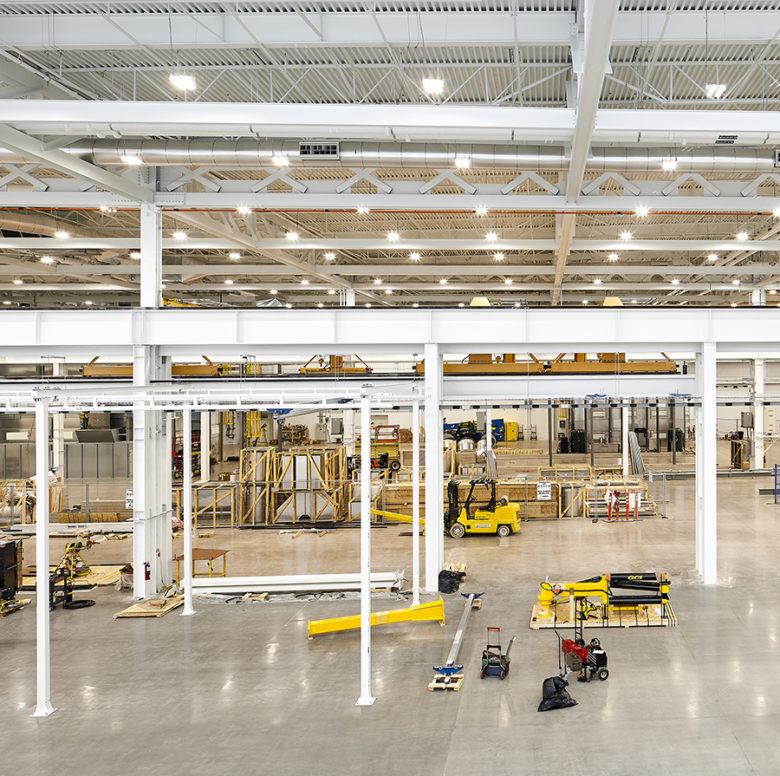
Custom HVAC control
The plant is fully air-conditioned to prevent ‘flash rust’, which can occur during machining of items such as crankshafts and connecting rods if humidity levels are not carefully controlled.
Industrial and support spaces
In addition to the main assembly and machine areas, three test cells, warehouse space, and paint areas, the plant also features front of house spaces such as offices, staff support, fitness centre, customer areas, hoteling for visiting customers and GE staff, conference rooms, etc.
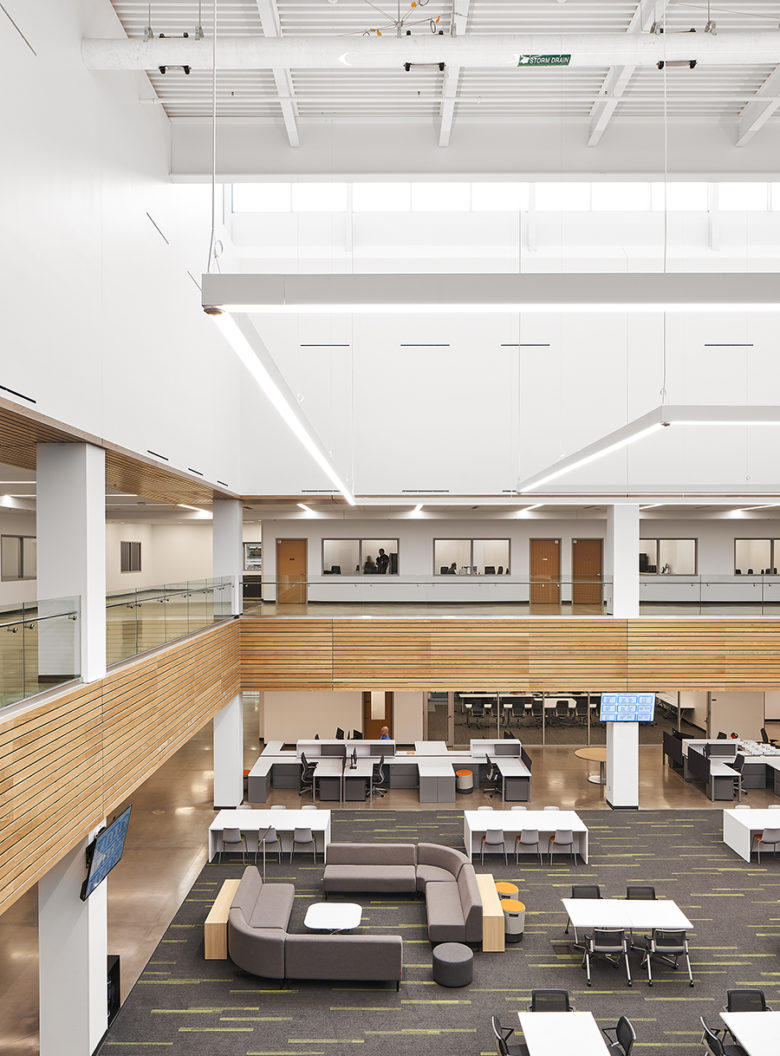
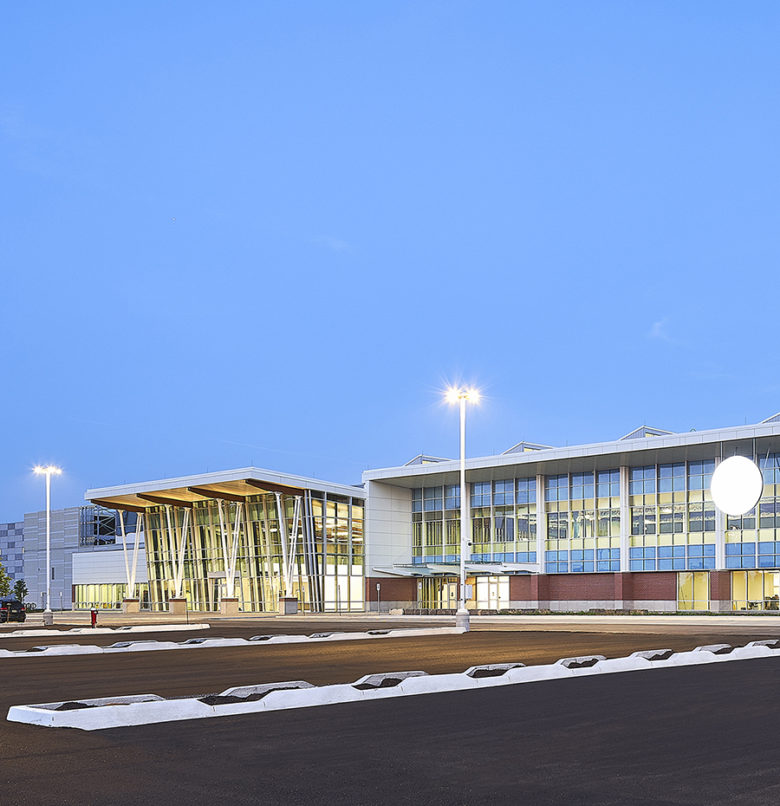
Expanding our scope
HH Angus’ project scope was increased to include the physical design of a significant new Test Cell addition to the plant, and to ensure Canadian compliance. The three test cells are connected to the main plant for testing engines prior to delivery. We met an aggressive schedule to produce working drawings for tender.
Billy Bishop Toronto City Airport
Expanded Air Terminal Building
When the new 150,000 ft2 terminal first opened to the public in 2010, the airline expected to almost double the number of passengers from the year before. Phase Two included 10 bridged aircraft gates and two additional passenger lounges. The terminal includes a mix of retail, food services, duty-free, car rentals and other amenities.
The large arrivals hall area, along with the increasing number of people using it, required a specialized heat recovery system. HH Angus designed a high efficiency enthalpy heat wheel system using outdoor air supply.
Among the benefits of this heat recovery system are reduced operating costs from recovering heat that would otherwise be lost by venting to the outside. In turn, this allows for a reduction in the size and capacity needed for the heating and cooling plant that serves the system.
An exterior sprinkler system for the apron area was included in our mechanical design. This system protects building occupants in the event of a jet fuel fire on the tarmac.
Some of the interesting design challenges on this project included the integration of the sanitary sewage system with the existing Terminal system. The Toronto Islands site has no gravity drainage and requires a pumping system for sanitary sewage. Also, the site is a live airport operation, which presented unique challenges regarding phasing of services.
Our elevator system designs responded to user needs for accessibility, safety, reliability and operational efficiency. Based on anticipated traffic numbers, plus luggage, a single large roped-hydraulic elevator (2,270 kgs) serves travelers in the corridor leading from the Ferry Building. Adjacent to this elevator, three reversible escalators serve the large numbers of passengers travelling without luggage, or with small carry-on baggage. These escalators are direction-based upon dynamic requirement.
The terminal’s airside area is separated into domestic and trans-border. Each has been fitted with a single, smaller roped-hydraulic passenger elevator (1590 kgs), and a single reversible escalator for passengers with carry-on bags only, again direction-based on dynamic requirement.
SERVICES
Mechanical Engineering | Vertical Transportation
PROJECT FEATURES
Size: 150,000 ft2 | Status: Completed 2011
LOCATION
Toronto, Ontario
KEY SCOPE ELEMENTS
High efficiency enthalpy heat wheel system using outdoor air supply for arrival hall area | Engineered 10 bridged aircraft gates, 2 new passenger lounges along with a mix of retail, food services, duty-free, car rentals and other amenities | Geothermal heat rejection for cooling plant | Implemented recapture and reuse of all rainwater | Reversible escalator | Exterior sprinkler system for the apron area to protect against fuel fires
Public Health Ontario Laboratories
MaRS Discovery District
“Every day, the entrepreneurs and innovators at MaRS work on ideas that will save lives, invent whole new industries and create jobs we can’t even imagine today.”
— Glen Murray, then-Minister of Research and Innovation
The MaRS* Discovery District combines a variety of companies, research disciplines and professional services, specifically promoting cross-institutional collaboration. The complex comprises approximately 1.5 million ft2.
HH Angus was engaged by Public Health Ontario to engineer its space in the MaRS Phase II building, in order to provide a new public health laboratory in Toronto. The project was a leasehold improvement of approximately 160,000 ft2 on the top four floors of the MaRS Phase II Tower in Toronto.
The project scope included CL-2 and CL-3 laboratories and associated support systems, as well as related office, administrative and support space.
The CL-2 and CL-3 labs were designed, constructed, commissioned and certified in accordance with the Health Canada Laboratory Biosafety Guidelines, as well as other authorities having jurisdiction. Merrick and Company was involved in the CL-3 architecture and engineering design.
SERVICES
Mechanical Engineering | Electrical Engineering | Vertical Transportation Design | Lighting Design | Communications & Security
PROJECT FEATURES
Size: 160,000 ft2 | Status: Completed 2014
LOCATION
Toronto, Ontario
KEY SCOPE ELEMENTS
Implemented new laboratory design | CL-2 and CL-3 labs | Associated support systems and office space
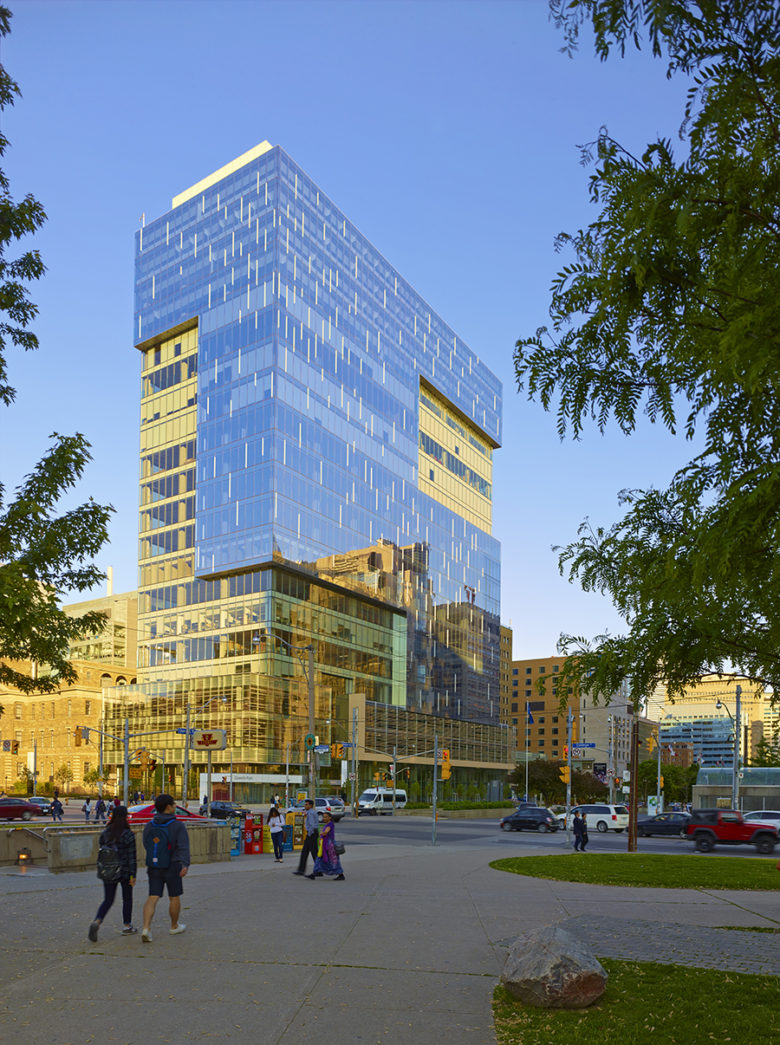
Safer spaces, lower costs
HH Angus negotiated with the City of Toronto for low level exhaust and supply. Instead of 1cfm/ft2, we implemented .75cfm/ft2. This resulted in the delivery of a safer site at less cost, as well as lower operating costs.
Density equals design complexity
This project was a complicated fitout, due to the high density of scientific equipment and associated requirements for mechanical and electrical infrastructure; for example, the large number of fume hoods on site.
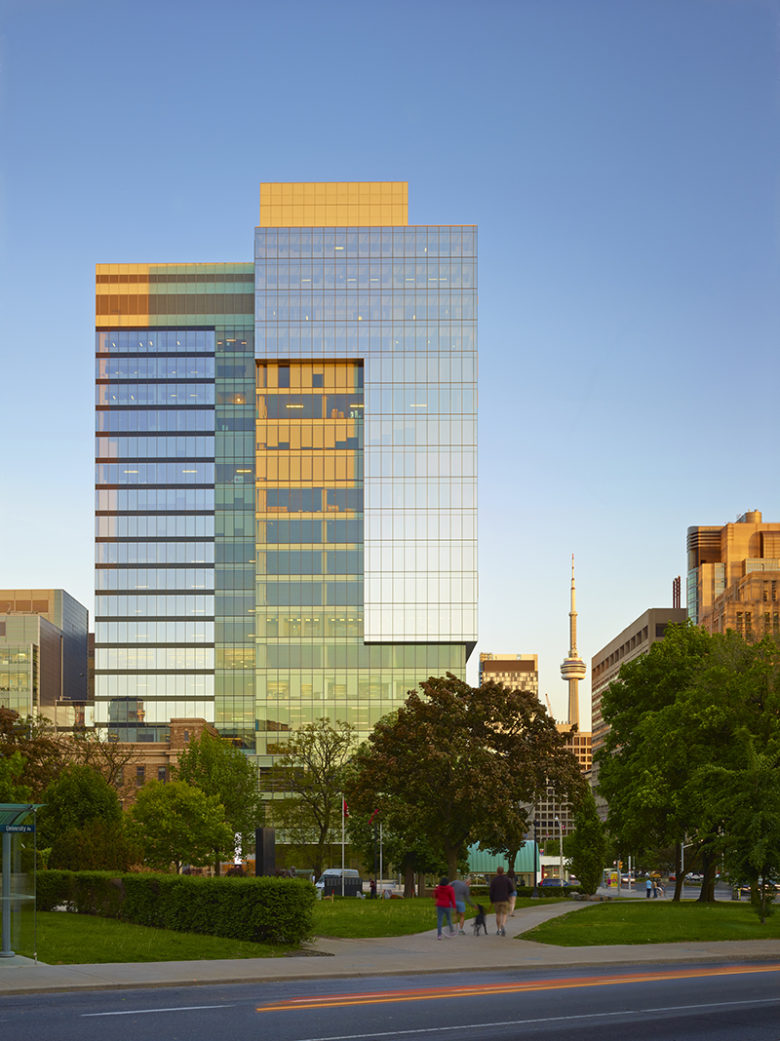
*MaRS refers to Medical and Related Sciences, the original mandate for the operation. When the founders wanted to further the commercial potential of research and science investment, the acronym came to represent the P3 development as a whole.
Quote source: MaRS Centre Phase 2 Set for Completion in Fall 2013
